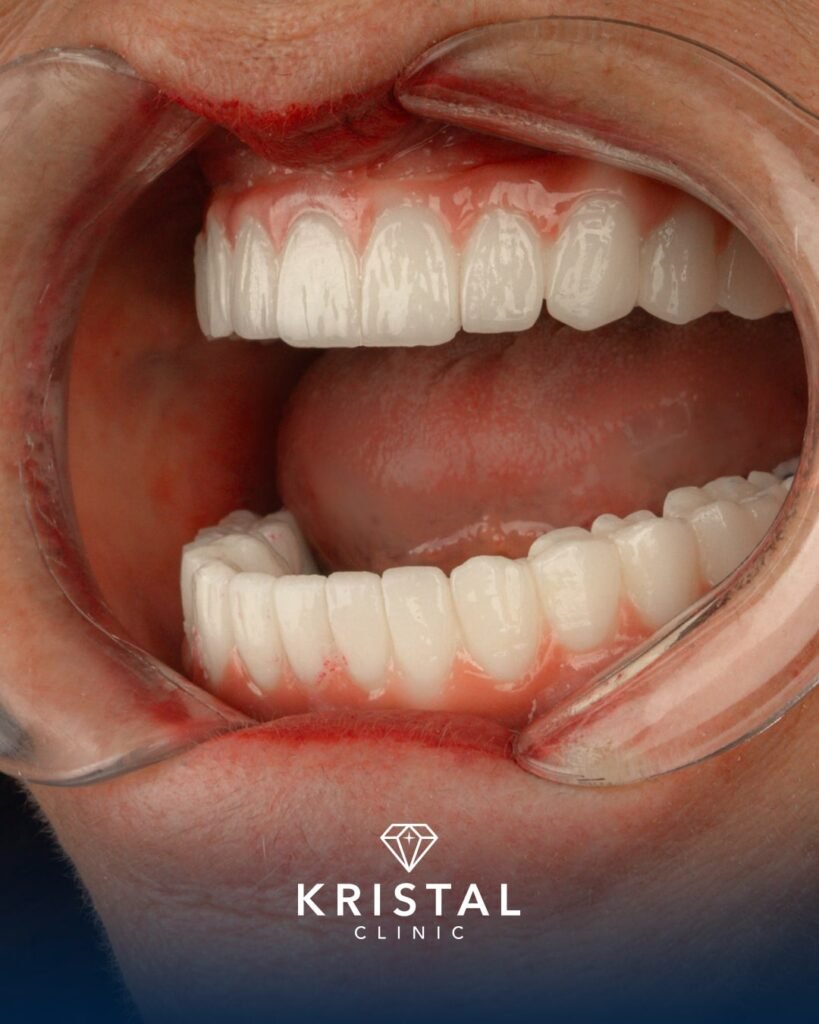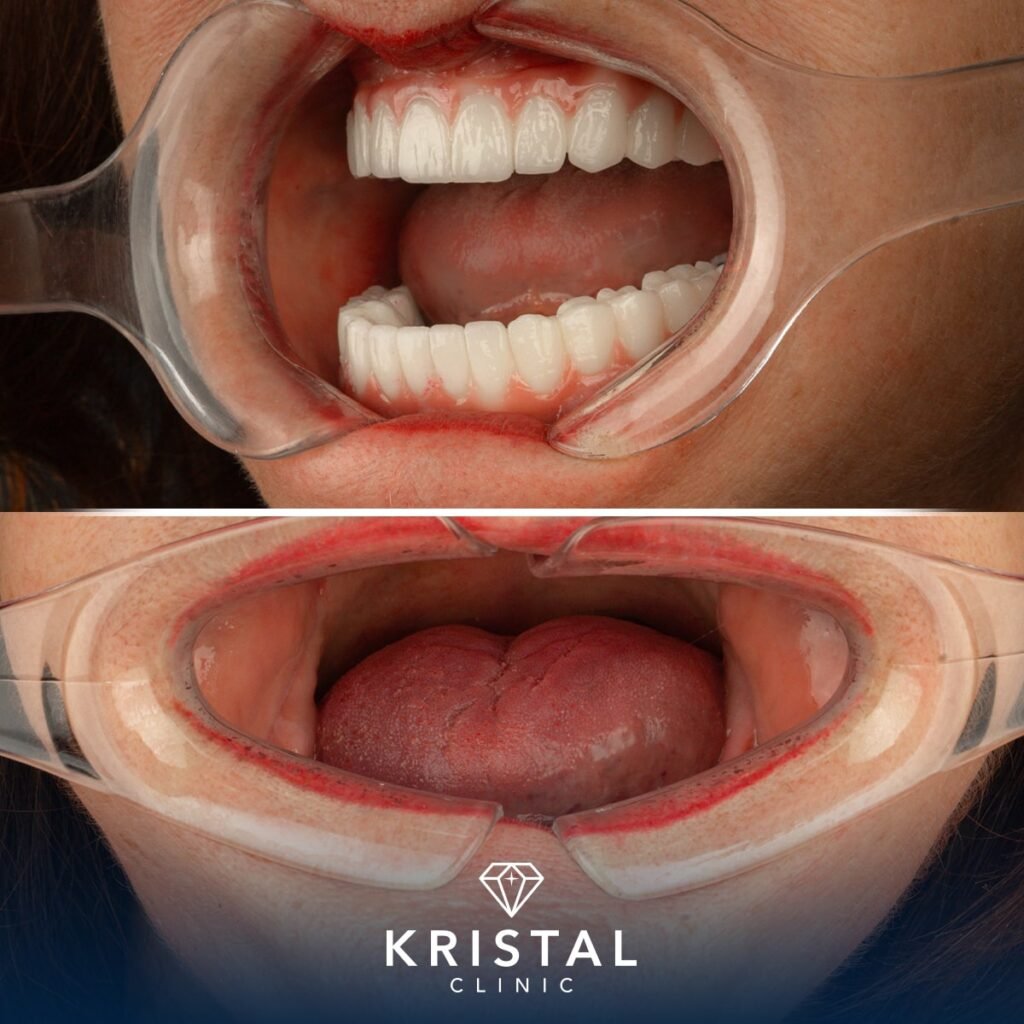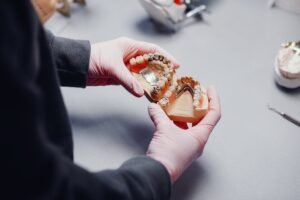Are you considering a permanent, full-arch solution like dental implants All-on-Four or All-on-6 dental implants? If so, there’s one tiny but mighty component that makes it all possible: the Multi-Unit Abutment (MUA).
This precision connector is the unsung hero of your new smile, ensuring it’s not just beautiful, but also stable, durable, and easy to maintain. Without it, modern dental implants—especially screw-retained systems—would be far more complex and less predictable.
In this complete guide, we’ll simplify everything you need to know about MUAs: what they are, how they work, the types of dental implants they support, and how they fit into your overall treatment plan and investment.
Table of Contents
ToggleWhat is a Multi-Unit Abutment (MUA)?
A Multi-Unit Abutment is a small, titanium prosthetic piece that acts as an intermediary connector between your dental implant (screwed into the jawbone) and your final full-arch bridge or denture. For a deeper look at the foundation it attaches to, you can read our guide on the endosteal implant.
Think of it as a sophisticated adapter that solves two major challenges in full-arch implantology:
Corrects Implant Angles: Implants must be placed where your bone is strongest, which often means they aren’t perfectly parallel. The MUA, especially the angled type, compensates for this, creating a uniform, level platform for your bridge.
Elevates the Prosthesis: It raises the connection point above the gumline. This makes attaching the final teeth easier for your dentist and keeps the area cleaner and healthier for you long-term.
The result is a passive fit—meaning your final bridge attaches without putting any stress on the implants, which is critical for the long-term health and success of your restoration. If you’re curious about the full treatment journey, learn more about how long dental implants take from start to finish.

Straight vs. Angled Multi-Unit Abutments
| Type | Angle | Primary Function | Ideal Use Case |
|---|---|---|---|
| Straight MUA | 0° | Acts as a height extender. | When implants are placed perfectly parallel to each other. |
| Angled MUA | 17° or 30° | Corrects divergent implant angles. | Essential for implants in the back of the jaw, which are often tilted to maximize bone contact and avoid sensitive structures. |
Visual Suggestion: A simple diagram here showing how an angled MUA straightens a tilted implant’s path would be incredibly effective.
Comparing Top Multi-Unit Abutment Brands
The reliability of your MUA is tied to the quality of the implant system. Here’s a look at the leading brands trusted by clinicians worldwide.
Nobel Biocare: The pioneer of the All-on-4® protocol. Known for extensive research, precision, and a wide range of compatible parts , Nobel is renowned for its extensive research, precision engineering, and comprehensive range of components.
Straumann: Renowned for high-quality Swiss engineering and exceptional stability across their implant lines (like BLX).
ZimVie / Zimmer Biomet: A highly established American system praised for its consistency and durability in demanding full-arch cases.
BioHorizons: Offers comprehensive size and angulation options, backed by strong clinical support.
MegaGen: A popular Korean system known for innovative thread designs and cost-effectiveness without compromising quality.

Understanding Multi-Unit Abutment Cost
It’s natural to ask about the cost of multi-unit abutments. However, it’s most helpful to view them as an essential, integrated part of your overall investment in a new smile—not just a separate line item.
What Influences the Cost?
Brand: Premium brands (Nobel, Straumann) often command a higher price than value-tier brands.
Angulation: Angled MUAs are typically more expensive due to more complex manufacturing.
Practice Overheads: The expertise of your surgical team and the technology they use are reflected in the cost.
While the component itself has a cost, its value is immense. It is the key to achieving a precisely fitted, easily maintainable, and long-lasting prosthesis—making it a wise investment in the longevity of your entire restoration. To see the transformative power of these solutions, explore our gallery of permanent dentures and celebrity dental implants before and after.
Clearing Up Common Confusions
“MUA vs. The Implant”: The implant is the screw in your jawbone. The MUA is the component that screws onto the implant. They work together but serve different purposes.
“Titanium vs. Endosteal”: Titanium is the material (used in most implants and MUAs), while endosteal refers to the placement type—in the bone. Most MUAs are made of titanium and attach to endosteal implants.
“MUA Bridge vs. Traditional Bridge”: A traditional bridging of teeth involves shaving down healthy teeth for support. An MUA-supported bridge is anchored to implants only, preserving natural teeth and supporting jawbone health.
“Not Used with Mini Implants”: MUAs are not typically compatible with mini dental implants, which are narrower and used for limited applications—not full-arch restorations.
Your Next Step Toward a Confident Smile
The Multi-Unit Abutment is a foundational pillar of modern, successful full-arch restorations. By ensuring proper alignment, a cleanable interface, and a stress-free fit, it directly contributes to the decades of service you can expect from your new teeth.
Ready to see if a full-arch implant solution with Multi-Unit Abutments is right for you?
Schedule a free, no-obligation consultation with our implant specialists today. We’ll provide a personalized assessment and a clear path to your new smile.
How to remove a multi-unit abutment?
Removal is usually done by a dental professional using a torque driver or specific tool. It's a quick and minimally invasive procedure, often performed during prosthetic adjustments or replacements.
What is the history of multi-unit abutment?
This type of abutment was introduced to improve outcomes in full-arch restorations, particularly in treatments like All-on-4. It was designed to manage angled implants and simplify prosthetic placement.
How long do dental implant abutments last?
With proper care, they can last 10 to 20 years or more. Their longevity depends on factors like oral hygiene, bite force, and regular dental checkups.
How to use multi-unit abutment?
It is typically used to connect multiple implants to a full-arch prosthesis. This setup allows for better angulation, easier maintenance, and a stable fit for the final restoration.
What are the three types of abutments?
The common types include stock abutments, custom-made ones tailored to the patient's anatomy, and those designed specifically for multi-implant cases like full-arch bridges.


